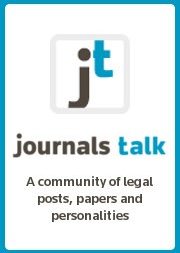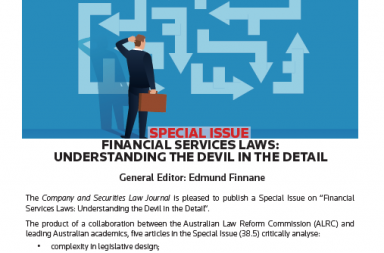*Please note that the links to the content in this Part will direct you to Westlaw AU.
To purchase an article, please email: [email protected] or contact us on 1300 304 195 (Australian customers) or +61 2 8587 7980 (international customers) during business hours (Mon-Fri, 8am-6pm AST).
The latest issue of the Criminal Law Journal (Volume 45 Part 5) contains the following material:
EDITORIAL – Editor: Mirko Bagaric
- The Pandemic and the Marked Drop in Crime: Correlation or Causation?
Click here to access on New Westlaw
Articles
Commonwealth Criminal Law and Interference with Automated Vehicles – Mark Brady, Andry Rakotonirainy and Kieran Tranter
The computer-controlled nature of contemporary road vehicles has reached a point where the in-vehicle computer control system manages a significant proportion of motor vehicle dynamic operation. In highly automated vehicles the automated driving system (ADS), undertakes the dynamic driving functions and overarching responsibility for the vehicle’s journey. Central to Australia’s future road transport system is the reliable operation of ADSs. ADS are networked, transmitting, and receiving data. This is a weakness that could be exploited to cause harm to individuals or the transport system. This article examines whether the Commonwealth criminal law is adequate for protecting against, or deterring from, unauthorised interference with ADSs. Three scenarios of interference are investigated. Scenario 1 is the intentional unauthorised interference with an ADS to cause harm. Scenario 2 involves unknowingly uploading of software containing harmful malware to an ADS. Scenario 3 is a third party installing unauthorised spyware on an ADS. This article argues that overall Commonwealth criminal law, specifically the “cybercrime†offences relating to unauthorised and malicious interference with computer systems, appear able to apply to various forms of interference with ADSs.
Click here to access this article on New Westlaw
Prosecution and Defence Strategies in Non-fatal Strangulation Cases: Are They Influenced By Victim Brain Injury and PTSD? – Sarah Kendall
Over the last two decades, offences for non-fatal strangulation (NFS) have been introduced in Australia and the United States (US). NFS can result in anoxic-hypoxic brain injury (AHBI) and post-traumatic stress disorder (PTSD), both of which impact on victims’ memory and other capacities. This article engages in empirical analysis of Australian and US cases to examine prosecution and defence strategies in NFS cases, and whether those strategies are influenced by knowledge of victim AHBI and PTSD. Three themes emerge from this analysis. First, many NFS victims show signs and symptoms of AHBI and/or PTSD. Second, prosecutors adduce a variety of evidence at trial – but none on AHBI or PTSD. Third, defence counsel use signs and symptoms of AHBI and PTSD, and myths and misconceptions about NFS, to create doubt. The article recommends that the prosecution of NFS includes an explanation of AHBI, PTSD and their effects on victims.
Click here to access this article on New Westlaw
“You Don’t Need to Knowâ€: The Australian Experience of Criminal Intelligence as Evidence – Dr Brendan Walker-Munro
Criminal intelligence, the synthesis of information and trained analysis to inform decision-making, has formed the cornerstone of policing and national security investigations for the last century. However, since 9/11 the traditional lines between “spies and cops†have become blurred, and Federal and State laws have become more permissive of the use of criminal intelligence as evidence in proceedings, often in circumstances where the parties are not allowed to view the evidence, test its strength or even know it exists. This article intends to engage with this paradigm, not only to expose its weaknesses but also to identify positivist mechanisms where such material – usually probative as to the facts in issue – might be used in ways that do not offend constitutional or common law principles.
Click here to access this article on New Westlaw
- Peniamina v The Queen (2020) 95 ALJR 85; 284 A Crim R 558; [2020] HCA 47 – Harriet Holowell
Click here to access on New Westlaw
Click here to access on New Westlaw
For the PDF version of the table of contents, click here: Westlaw AU – Crim LJ Vol 45 No 5 Contents or here: New Westlaw Australia – Crim LJ Vol 45 No 5 Contents.
Click here to access this Part on Westlaw AU
Click here to access this Part on New Westlaw AU
For general queries, please contact: [email protected].


